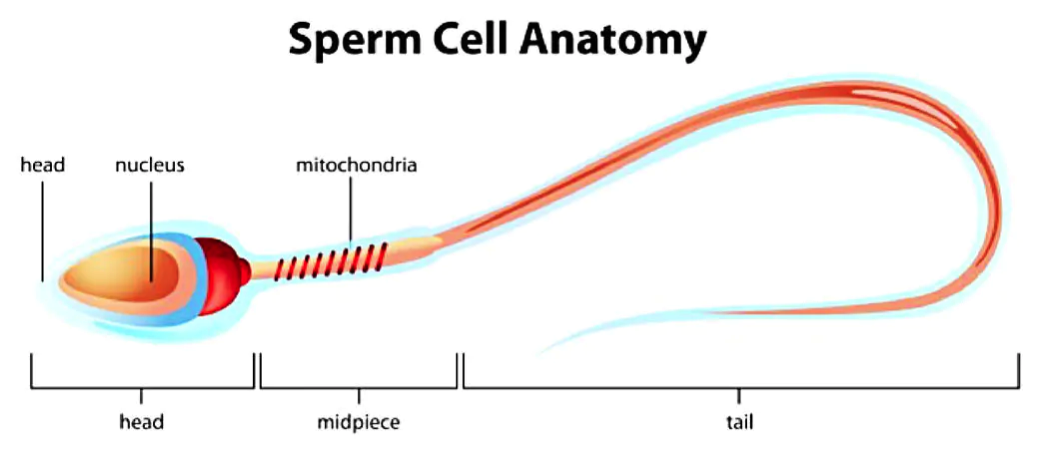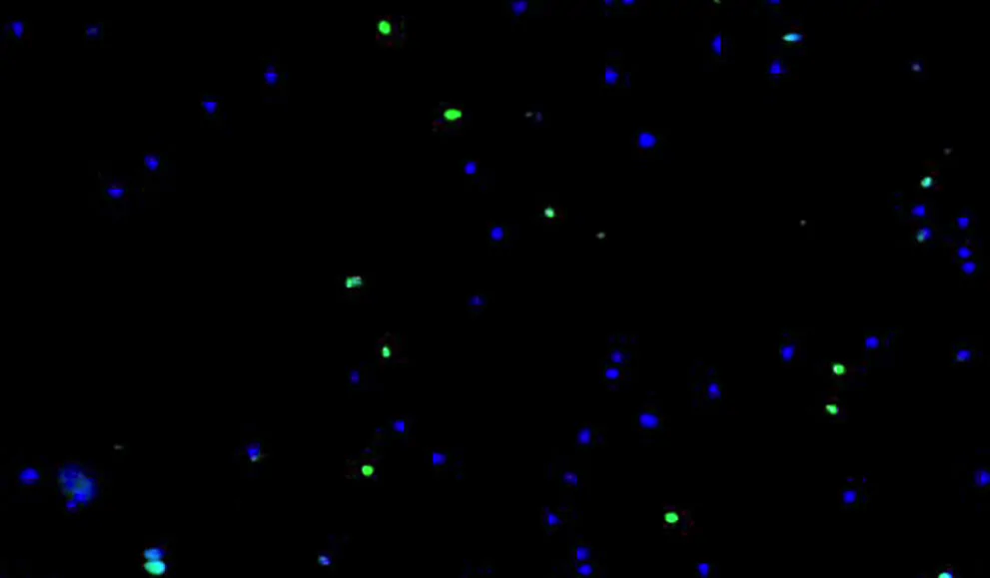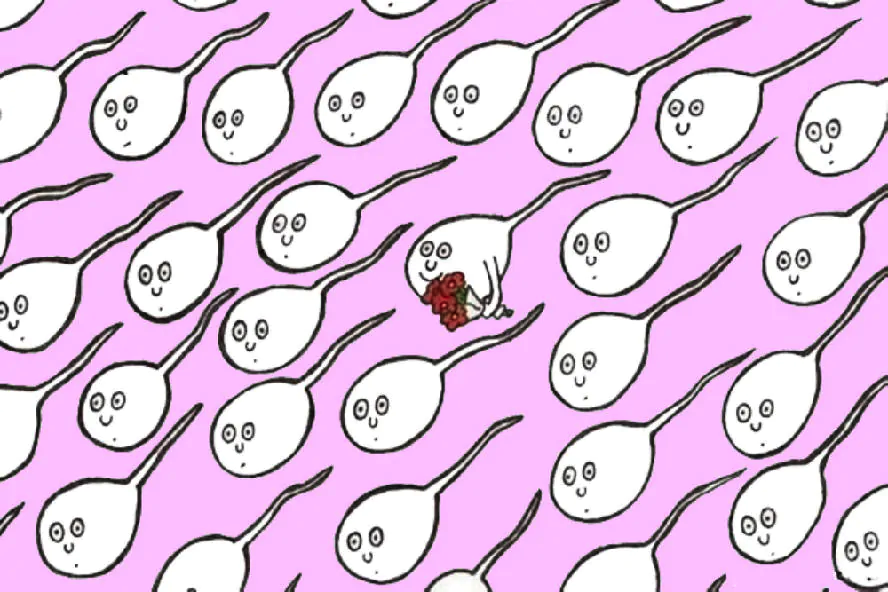Turbocharge your sperm
1
Acupuncture
Acupuncture improve sperm count and quality by reducing stress, increasing blood flow to the reproductive organs and balancing the endocrine system, according to several studies and medical research. ... Acupuncture reduce inflammation and improve flow in sperm ducts, it also lower temperature in the reproductive area
2
Chinese herbs
Chinese medicine is known to cause a significant improvement in sperm count, morphology, motility and liquefaction. Research studies show that both acupuncture and Chinese herbal medicine affect hormone levels and testicular blood flow, thus promoting the production of healthy sperm. Chinese medicine increases sperm motility, concentration and survival rate possibly by improving the physiological integrity of sperm membranes.
3
supplements
Vitamin E improves sperm motility and pregnancy rate. ... Folic acid + zinc sulfate improves sperm concentration and morphology; folic acid improves sperm morphology in subfertile patients. Zinc improves sperm morphology in fertile patients.Vitamin C improve sperm fragmentation, Krill oil improve overall sperm quality and concentration
• Age: Though not as marked as in women, a gradual decline in fertility is common after age 35 in men, increasing after age 42.
• Impaired shape and motility: Abnormal spermatogenesis, or sperm production, may
result in sperm that are not able to reach the
egg or to penetrate it.
• Low sperm concentration: Normal sperm
concentration in men is greater than or equal to 20 million sperm per millilitre of semen. Sperm count lower than 50 percent of this number (10 million) indicates low sperm concentration.
• Varicocele: Varicose veins in the scrotum, called varicocele, may prevent normal cooling of the testicles and lead to reduced sperm count and motility.
• Undescended testicle: This congenital condition occurs when one or both testicles fail to descend from the abdomen into the scrotum during fetal development. When the testicles are exposed to the higher internal body temperature compared to the temperature in the scrotum, sperm production may be affected.
• Testosterone deficiency (male hypogonadism): Disorders of the testicles, or conditions affecting the hypothalamus or pituitary gland in the brain, may result in low testosterone levels that impair fertility.
• Overheating the testicles: Frequent use of saunas or hot tubs can impair sperm production and lower sperm count by raising the core body temperature.
• Genetic defects: Sperm abnormalities may be genetic.
• Sexually transmitted diseases: Repeated bouts of sexually transmitted diseases, such as chlamydia and gonorrhea, can affect sperm motility.
• Sexual issues: Erectile dysfunction, premature ejaculation, painful intercourse and psychological problems can all contribute to infertility.
• Retrograde ejaculation: This occurs when ejaculate does not leave the body during orgasm but rather enters the bladder.
• Blockage of the reproductive system or anatomical irregularities: Blockage of the ejaculatory ducts or various passages through which sperm and ejaculate flow can affect fertility. Men with cystic fibrosis sometimes have a missing or blocked vas deferens, and the lack or misplacement of any part of the reproductive system will often require reconstructive surgery.
• No semen (ejaculate): Men with spinal cord injuries or diseases may not have the ability to produce the fluid required to carry the sperm from the penis into the vagina.
• Anti-sperm antibodies: These antibodies attack sperm and may be present after vasectomy or in the female's body.
• Pesticides and other chemicals: Herbicides and insecticides have been associated with reduced sperm production and testicular cancer. Lead exposure may also cause infertility.
• Malnutrition and weight management:
Deficiencies in nutrients such as vitamin C, selenium, zinc and folate may contribute to infertility. Additionally, a high body mass index is associated with impaired fertility in men and women.
• Smoking, alcohol and substance abuse: Use of cocaine or marijuana may temporarily reduce the number and quality of sperm, and smoking tobacco may lower sperm count. Alcohol has also been associated with decreased fertility.
• Cancer treatments: Cancer treatments such as radiation, chemotherapy, and in the case of testicular cancer, the removal of the testicles, can affect fertility.
• Other medical conditions: Fertility may be impaired as a result of various health conditions such as autoimmune disorders, diabetes, thyroid disease, Cushing's syndrome and anaemia.
Factors taken into account to value semen
The following factors are valued in a semen analysis:
Volume of the ejaculated matter:
Average volume per ejaculate is about 2ml. About 90% of semen volume is made up of secretions from the accessory glands, mainly the prostate and seminal vesicles.
Colour:
A normal liquefied semen sample has a homogeneous, grey-opalescent appearance. It may appear less opaque if the sperm concentration is very low. A green or yellowish colour indicates seminal infection. Brown, reddish or other dark colours indicate the presence of blood (haemospermia), generally due to an inflammation or congestion in any level of the seminal path.
Viscosity:
If the seminal liquid is thick, it can inhibit the forward movement of the sperm cells. This problem is solved by getting semen prepared for intrauterine inseminations.
pH:
The pH of semen reflects the balance between the pH values of the different accessory gland secretions, mainly the alkaline seminal vesicular secretion and the acidic prostatic secretion. pH alterations in semen indicate further alterations in the prostate or seminal vesicles. The lower reference limit for pH is 7.2.
Number of spermatozoids:
The number of spermatozoa in the ejaculate is calculated from the concentration of spermatozoa, which is measured during semen evaluation. For normal ejaculates, when the male tract is unobstructed and the abstinence time short, the total number of spermatozoa in the ejaculate is correlated with testicular volume and thus is a measure of the capability of the testes to produce spermatozoa and the patency of the male tract. Anything less than 15 million sperm per millilitre, or 39 million sperm per ejaculate, is considered low.
Sperm cell mobility:
The motility of each spermatozoon is graded as follows:
Progressive motility (PR): spermatozoa moving actively, either linearly or in a large circle, regardless of speed.
Non-progressive motility (NP): all other patterns of motility with an absence of progression, e.g. swimming in small circles, the flagellar force hardly displacing the head, or when only a flagellar beat can be observed. Immotility (IM): no movement. The lower reference limit for progressive motility (PR) is 32%. The lower reference limit for total motility (PR + NP) is 40%.
Sperm cell vitality:
It is clinically important to know whether immotile spermatozoa are alive or dead. The presence of a large proportion of vital but immotile cells may be indicative of structural defects in the flagellum; a high percentage of immotile and non-viable cells (necrozoospermia) may indicate epididymal pathology. The lower reference limit for vitality is 58%.

Human semen samples contain spermatozoa with different kinds of malformations. By the strict application of certain criteria of sperm morphology, relationships between the percentage of normal forms and
various fertility endpoints (time-to pregnancy (TTP), pregnancy rates in vivo and in vitro) have been established, which may be useful for the prognosis of fertility.
The lower reference limit for normal forms is 4%.
Agglutination:
This phenomenon takes place when sperm cells get stuck together and, thus, lose mobility.
It can be caused by antisperm antibodies, by a big sperm cell concentration or by infections.
Physical damage to the male reproductive tract can lead to sperm antibody formation.
This is best exemplified by the high incidence of sperm antibodies associated with vasectomy, where up to 70% of patients develop antibodies after the procedure. Blunt trauma or medical procedure such as testicular biopsy may cause sperm antibodies to form as well.
Leukocytes:
Leukocytes, predominantly polymorphonuclear leukocytes, are present in most human ejaculates; the reference value is 1.0 × 106. If there is an increase in the number of leukocytes, the most adequate treatment is antibiotics.

Fragmentation of the DNA of the sperm:
Spermatic DNA fragmentation, as its name indicates, refers to breakage or lesions in the genetic material of the sperm.
The larger the number of lesions, the lower will be the integrity of the genetic material and the probabilities of producing a full-term pregnancy.
In some cases, the oocyte can repair the damage to the DNA of the sperm that has fertilised it. This will depend on various factors: - The type of DNA lesion.
Double strand breaks cannot be repaired
- The percentage of DNA of the affected sperm. - The quality of the oocyte, since it will depend on it whether or not it can repair the DNA damage in the sperm.
This parameter is generally linked to the age of the patient. - The levels of DNA fragmentation can differ from one sample to another obtained one or several weeks later.

When IVF ends in repeated failure or miscarriage, it is impossible to tell if the problem is with the genetic components of the egg or of the sperm.
In this case PGD (preimplantation diagnosis) is required: this involves taking a cell from developing embryos on Day 3 (at this stage they are still stem cells, it does not cause damage to the embryos, the cells are simply replaced). The cells are then sent to a lab for the FISH test, a procedure that makes chromosomes fluorescent.
What the FISH test highlights is any fragmentation of chromosome, the absence or the presence of an extra chromosome (most aneuploidies are lethal in humans, the most common aneuploidies are trisomy, which represent about 0.3% of all live births.
Trisomies are characterized by the presence of one additional chromosome, bringing the total chromosome number to 47. With few exceptions, trisomies do not appear to be compatible with life. In fact, trisomies represent about 35% of spontaneous miscarriages)
The FISH test is often used also for sperm in case of a high risk of chromosomal abnormalities.



In fact, the World Health Organization has had to reduce the normozoospermia parameters from 100 million sperm cells/ml in 1985 to the current 20 million and that is about to become 15 million/ml.
According to some recent investigation, the key determining moment of a male’s fertile future is given during his testicular development as a fetus. “This is due to the estrogenic disruptors, a long listing of chemical substances that act as estrogens in the human organism.”
When a pregnant woman is affected by these, the levels of estrogen her blood passes on to her male fetus are too high.
This explains the great variations in semen quality between different countries or regions within one same country, and, thus, it is the reason it is now considered that chemical elements are the main cause of male infertility.
Testosterone, together with dihydrotestosterone (DHT) that is produced locally from testosterone, plays a pivotal role in the masculinisation of external genitalia and prostate of the male fetus, driving the process of “making a male” during a specific period of fetal development named “masculinization programming window” (Fisher, 2004; Welsh et al., 2008; Scott et al., 2009; Knez, 2013; Svechnikov et al., 2014).
In humans this window extends from 6.5 to 14 gestational week (N'Tumba-Byn et al., 2012); whereas, testosterone reaches its maximal values between 11 and 18 weeks of gestation. Institut Marquès has also carried out several studies on semen quality following this investigation trend, and has recently analyzed, next to CSIC (Superior Council of Scientific Investigation) the concentration of endocrine disruptors in maternal milk in autonomous communities with great difference in semen quality.
What are the main estrogenic disruptors?
Bispenol A: It is widespread in the environment and every year 2.2–4.7 million tons of Bispenol A are released into the environment, of which around 1.2 million tons are produced in EU; the amounts are rising by about 6–8% yearly.
Human beings are mainly exposed to BPA via dietary ingestion of leachings from the inner
lining of cans and microwave containers during heating of food materials or beverages in polycarbonate recipients due to repeated usage.
It has been estimated that the human body is exposed to concentrations of 10 μg/day of BPA and it can be detected in several human body samples, such as serum, urine, amniotic fluid of pregnant women, breast milk and in semen.

Phthalates are industrial chemicals with very different applications and toxicological properties. Specifically, they are used as plasticizers to add softness, flexibility, durability, transparency, and longevity to a variety of consumer, industrial, and medical products.
Phthalates are considered to be one of the major groups of anti-androgenic substances. Maternal exposure to phthalates provides the first source of fetal exposure, through amniotic fluid, umbilical cord blood and other bodily fluids.

Change of lifestyle, acupuncture, herbal medicine and antioxidant can all contribute to an improvement of sperm quality. Over a period of three months, it is possible to see some marked improvement in:
Agglutination: this is more of an autoimmune issue, but it responds well to a combination of acupuncture and herbal medicine.
Morphology and motility: again, the combination of acupuncture and herbal medicine can improve both morphology and motility in three months or less. DNA fragmentation: for this issue, I use acupuncture with a mixture of antioxidant and Chinese herbs, with usually a very positive outcome.
To treat this kind of problem, I prefer to focus on the treatment strategy. The main issues are:
- A good supply of blood to the reproductive system (this is often restricted by many hours sitting in front of a computer, five or six days a week).
- Reducing any inflammation around the prostate: low grade inflammation will raise the temperature locally and interfere with sperm production.
- Improving the general health of the patient, changing the lifestyle, reducing stress, improving nutrition lowering the intake of alcohol.
- Some nutritional supplements are important for sperm fragmentation: vitamin C, vitamin E and vitamin D. In some American research the combination of Flaxseed and Krill oil was also very beneficial, Krill oil contains a good concentration of an important antioxidant called astaxanthin.
- Zinc and Selenium are important and can be found in a variety of nuts as are some amino acids such as L-carnitine and Acetyl-L- Carnitine easily available in nutritional supplements such as Proxeeds plus.

